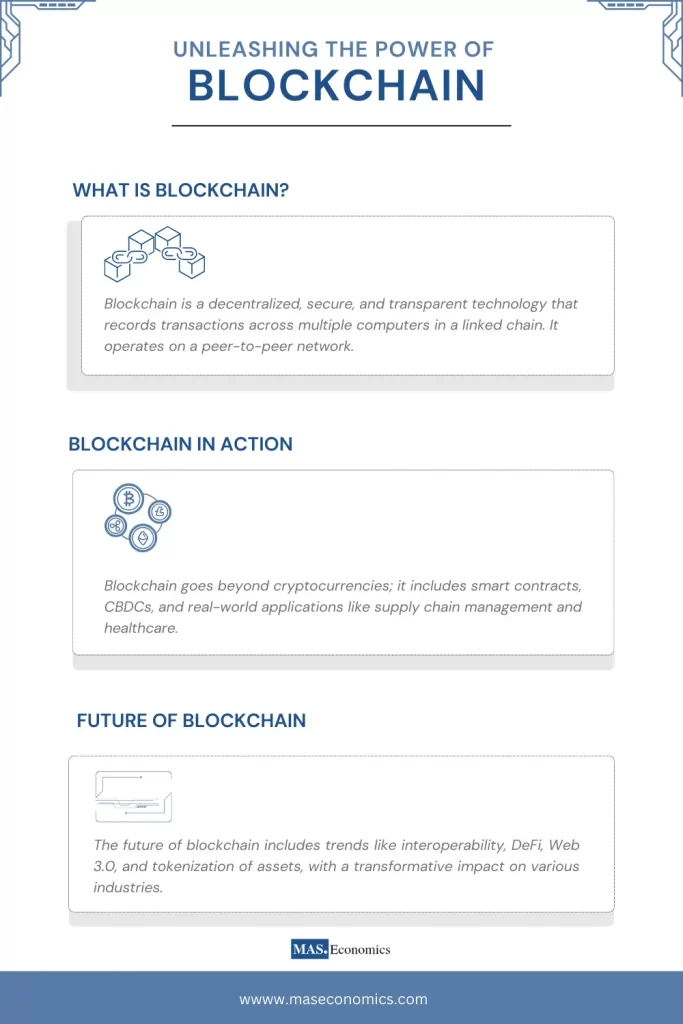Welcome to MASEconomics, your trusted source for insights into the complex world of economics. In today’s fast-paced digital era, staying ahead of the curve in emerging technologies is more crucial than ever. Blockchain, a groundbreaking innovation, has been making waves globally, transforming industries, and redefining how we perceive and conduct transactions.

Understanding Blockchain
What is Blockchain?
Blockchain is a powerful technology that operates on a peer-to-peer network, making it highly secure and transparent. Unlike traditional centralized systems, where a single authority controls the ledger, blockchain is decentralized and distributed, recording transactions across multiple computers. These transactions are grouped into blocks, which are cryptographically linked to form an unbreakable chain. With superior security and transparency, blockchain is the future of transaction recording and storage.
How Does It Work?
Blockchain relies on a consensus mechanism (either proof of work or proof of stake) to validate and record transactions. Once network participants (nodes) verify a transaction, it is immediately added to a block. These blocks are then connected chronologically, forming an immutable ledger that cannot be altered or tampered with. This decentralized nature ensures that no single entity can manipulate the data, making blockchain one of the most secure and reliable technologies.
Key Features
- Decentralization: No central authority governs blockchain. Network participants validate transactions.
- Immutability: Once a transaction is added to the blockchain, it becomes immutable and cannot be altered or deleted, guaranteeing the utmost data integrity.
- Transparency: All transactions are visible to network participants, enhancing trust.
- Security: Advanced cryptography and consensus mechanisms protect the blockchain from tampering.
Cryptocurrencies and Beyond
Cryptocurrencies
Cryptocurrencies were brought to life with the arrival of Bitcoin in 2009. Built on blockchain technology, cryptocurrencies are digital or virtual currencies that use cryptography for security. Bitcoin, Ethereum, and other altcoins have gained immense popularity, serving as decentralized forms of digital cash and investment vehicles.
Smart Contracts
Blockchain’s capabilities extend beyond cryptocurrencies. Smart contracts, self-executing agreements with predefined rules, allow for automated and trustless transactions. Platforms like Ethereum have pioneered intelligent contract functionality, opening doors to applications in supply chain management, legal processes, and more.
Central Bank Digital Currencies (CBDCs)
Central Bank Digital Currencies (CBDCs) are a testament to governments and central banks’ growing acceptance of blockchain technology. CBDCs are digital representations of a country’s official currency issued and regulated by the central bank. By utilizing blockchain technology, CBDCs aim to enhance the efficiency of monetary transactions, improve financial inclusion, and provide governments with more significant insights into their monetary systems.
Real-World Applications
Financial Services
Blockchain has disrupted the financial industry by enabling faster, more secure, cost-effective cross-border payments. Ripple, for instance, leverages blockchain to facilitate real-time international money transfers. Additionally, blockchain is redefining asset management with tokenizing assets like real estate and art.
Supply Chain Management
Blockchain enhances transparency and traceability in supply chains. Companies can track the journey of products from manufacturer to consumer, reducing fraud and ensuring product authenticity. IBM’s Food Trust is a prime example, ensuring food safety by tracing the origin of products.
Healthcare
Patient records, drug authenticity, and clinical trials can all benefit from blockchain’s secure and interoperable data sharing. Healthcare providers are exploring blockchain to improve data accuracy and patient privacy while streamlining processes.
Voting Systems
Blockchain-based voting systems promise secure, transparent, and tamper-proof elections. By recording votes on the blockchain, governments can eliminate fraud and provide accessible voting solutions for citizens worldwide.
Challenges and Concerns
Scalability
Blockchain networks face challenges in scaling to accommodate a growing user base and transaction volume. Solutions like sharding and layer-2 protocols are being developed to address this issue.
Energy Consumption
Proof of work blockchains, like Bitcoin, have faced criticism for their energy-intensive mining processes. A potential solution is transitioning to more energy-efficient consensus mechanisms, such as proof of stake.
Regulatory Uncertainty
Regulatory blockchain and cryptocurrencies are a complex matter that governments worldwide must confidently tackle. Balancing innovation and consumer protection is an ongoing challenge that must be met with assertiveness and strategic planning.
The Future of Blockchain
Interoperability
Blockchain networks are becoming more interoperable, allowing seamless data and asset transfer between chains. This interoperability will unlock new possibilities for cross-industry applications.
Decentralized Finance (DeFi)
The DeFi movement, powered by blockchain, confidently seeks to revolutionize traditional financial systems by offering decentralized lending, borrowing, trading, and yield farming services to anyone with an internet connection.
Web 3.0
The internet is evolving towards a decentralized model, where users have complete ownership and control over their data and digital identities. Blockchain technology is critical in making this vision a reality by empowering users to possess and manage their digital assets.
Tokenization of Everything
As blockchain technology matures, we can expect the tokenization of various assets, from real estate and art to intellectual property and digital collectibles. This will democratize access to investments and acquisitions.
Conclusion
Blockchain technology is at the forefront of a digital revolution. Its impact extends far beyond cryptocurrencies, touching various aspects of our lives, from finance and healthcare to supply chain management and voting systems. While challenges exist, the potential for innovation and positive change is immense.
As blockchain continues to evolve and find its place in mainstream applications, it empowers individuals, organizations, and societies to redefine how they interact with data, assets, and each other. The journey has just begun, and the future of blockchain promises to be transformative and full of opportunities. Embracing this technology is not merely an option; it’s a step toward shaping a more decentralized, secure, and interconnected world.
In the coming years, as blockchain technology matures further, we can anticipate even more groundbreaking developments that will reshape industries and enhance the way we live and work. Stay tuned for a future where blockchain’s potential is fully realized, including integrating Central Bank Digital Currencies (CBDCs), paving the way for a more efficient and inclusive financial ecosystem.
Stay informed, stay ahead, and keep learning with MASEconomics!
















